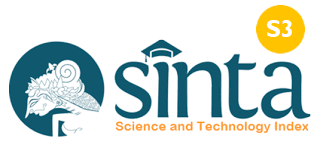Innovating Education Online Crafting Dynamic Learning Environments
DOI:
https://doi.org/10.37329/cetta.v7i3.3428Keywords:
SAM Model, STEM Education, Online Courses, Web-Based Learning EnvironmentsAbstract
Web-based learning environments have changed the traditional way of teaching to be more interactive and adaptive. However, there are challenges in making e-learning designs effective, aesthetically appealing and easy to use, and capable of improving learning outcomes and changing learning behaviors. This study investigates the influence of web-based learning environments on STEM education, focusing on the aesthetic appeal, user-friendliness and appropriateness of the visual design of mobile websites. The research objective is to evaluate the effectiveness of e-learning designs that include the incorporation of creativity, structured approaches, and evidence-based practices to improve learning outcomes and change learning behaviors. The research methodology involved literature analysis, content organization, and integration of interactive instructional design and multimedia elements. Merrill's Principles of First Instruction and the SAM Model were used as the basis of learning theory. Evaluation was conducted on modularity, scalability, codebase security, and user experience through navigation, intuitiveness, accessibility, and overall user happiness. The GUI design is accessible via PC/Laptop and Android and iOS-based mobile devices. The results show that comprehensive instructional design and the use of multimedia learning can improve learning outcomes. The integration of multimedia content such as videos, images, and interactive simulations within the web learning environment can increase engagement and facilitate effective learning. media experts and programming experts evaluated the visual and technical aspects of the website, providing recommendations to improve usability and performance. users also evaluate the website's ability to facilitate stem learning and report usability issues that could be improved. regular performance monitoring and testing, along with implementing best practices, can improve website quality and performance. fixing usability issues and improving website performance will provide a better learning experience for users.
References
Akbar, J. S., Dharmayanti, P. A., Nurhidayah, V. A., Lubis, S. I. S., Saputra, R., Sandy, W., ... & Yuliastuti, C. (2023). Model & Metode Pembelajaran Inovatif: Teori Dan Panduan Praktis. PT. Sonpedia Publishing Indonesia.
Allen, M. W. (2011). Designing Successful E-Learning: Forget What You Know About Instructional Design And Do Something Interesting (Vol. 2). John Wiley & Sons.
Allen, P., Withey, P., Lawton, D., & Aquino, C. T. (2016). Andragogical Teaching Methods to Enhance Non-Traditional Student Classroom Engagement. Journal of Educational Technology, 13(2), 47-59.
Chafi, M. B., & Cordero, A. C. (2020). Contextual User Research Methods For Eliciting User Experience Insights In Workplace Studies. Future Workspaces, 265-275.
Currier, S., Brown, S., & Ekmekioglu, F. C. (2001). Inspiral: Investigating Portals For Information Resources And Learning. Final project report.
Firdaus, S., & Hamdu, G. (2020). Pengembangan Mobile Learning Video Pembelajaran Berbasis Stem (Science, Technology, Engineering And Mathematics) Di Sekolah Dasar. Jinotep (Jurnal Inovasi dan Teknologi Pembelajaran): Kajian dan Riset Dalam Teknologi Pembelajaran, 7(2), 66-75.
Honey, M., Pearson, G., & Schweingruber, H. A. (Eds.). (2014). Stem Integration In K-12 Education: Status, Prospects, And An Agenda For Research (Vol. 500). Washington, DC: National Academies Press.
Khdiar, M. (2018). Detection, Assessment, And Management Of Phytophthora Species In An Urban Forest (Doctoral dissertation, Murdoch University).
Lin, Y. T., Wen, M. L., Jou, M., & Wu, D. W. (2014). A Cloud-Based Learning Environment For Developing Student Reflection Abilities. Computers in Human Behavior, 32, 244-252.
Lambropoulos, N. (2007). User-Centered Design Of Online Learning Communities. In User-Centered Design Of Online Learning Communities (pp. 1-28). IGI Global.
Magdalena, I., Syaifulloh, A., & Salsabila, A. (2024). Asumsi Dasar dan Desain Pembelajaran. Sindoro: Cendikia Pendidikan, 2(5), 41-50.
Mangaroska, K., & Giannakos, M. (2018). Learning Analytics For Learning Design: A Systematic Literature Review Of Analytics-Driven Design To Enhance Learning. Ieee Transactions on Learning Technologies, 12(4), 516-534.
Pahl, C. (2008). A Hybrid Method for the Analysis of Learner Behavior in Active Learning Environments. In Web-based Education And Pedagogical Technologies: Solutions For Learning Applications (pp. 89-101). Igi Global.
Pressman, R. S. (2005). Software Engineering: A Practitioner’s Approach. Pressman and Associates.
Ramadhan, W., Meisya, R., Jannah, R., & Putro, K. Z. (2023). E-modul pendidikan pancasila berbasis canva berbantuan flip pdf profesional untuk meningkatkan hasil belajar siswa sekolah dasar. Jurnal Pemikiran Dan Pengembangan Sekolah Dasar (Jp2sd), 11(2), 178-195.
Schön, E. M., Thomaschewski, J., & Escalona, M. J. (2017). Agile Requirements Engineering: A Systematic Literature Review. Computer Standards & Interfaces, 49, 79-91.
Udeh, C. A., Orieno, O. H., Daraojimba, O. D., Ndubuisi, N. L., & Oriekhoe, O. I. (2024). Big Data Analytics: A Review Of Its Transformative Role In Modern Business Intelligence. Computer Science & IT Research Journal, 5(1), 219-236.
Yadi, F., Santosa, M. A., Sari, D. P., Putri, S. M., & Rusdi, L. S. (2023). Development Of Stem Application-Based Learning Media In Maintenance And Repair Courses At Ptm-Unsri. Jurnal Pendidikan Teknik Mesin, 10(2), 195-204.
Zatserkovnyi, O. Enhancing Students’ Writing Quality through Computer-Mediated Learning: the Role of Cognitive Activity. Scientific journal «International Journal of Philology», 14(2), 116-129.
Downloads
Published
How to Cite
Issue
Section
License
Copyright (c) 2024 Agus Arifin, Yayat Ruhiat, Lukman Nulhakim

This work is licensed under a Creative Commons Attribution-ShareAlike 4.0 International License.
An author who publishes in the Cetta : Jurnal Ilmu Pendidikan agrees to the following terms:
- Author retains the copyright and grants the journal the right of first publication of the work simultaneously licensed under the Creative Commons Attribution-ShareAlike 4.0 License that allows others to share the work with an acknowledgement of the work's authorship and initial publication in this journal
- Author is able to enter into separate, additional contractual arrangements for the non-exclusive distribution of the journal's published version of the work (e.g., post it to an institutional repository or publish it in a book) with the acknowledgement of its initial publication in this journal.
- Author is permitted and encouraged to post his/her work online (e.g., in institutional repositories or on their website) prior to and during the submission process, as it can lead to productive exchanges, as well as earlier and greater citation of the published work (See The Effect of Open Access).
Read more about the Creative Commons Attribution-ShareAlike 4.0 Licence here: https://creativecommons.org/licenses/by-sa/4.0/.





